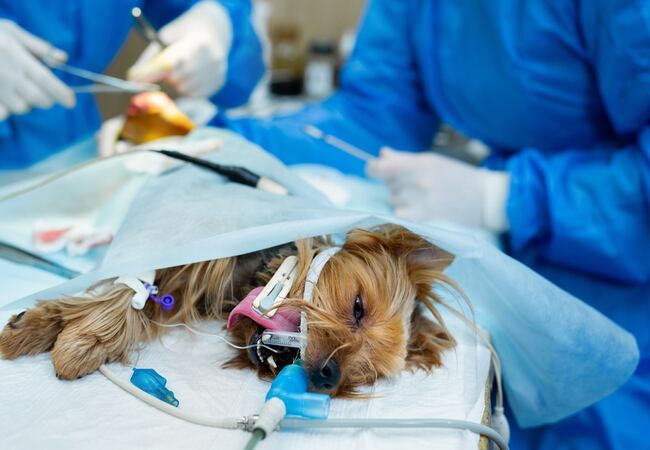Vet‑Approved 2025 Guide: Anesthesia Risks in Pets – What Every Pet Owner Should Know 🐶🐱

In this article
Vet‑Approved 2025 Guide: Anesthesia Risks in Pets – What Every Pet Owner Should Know 🐶🐱
By Dr. Duncan Houston BVSc
Anesthesia allows safe, pain-free veterinary care—but it comes with risks. This guide explains the top 5 anesthesia risks in dogs and cats, and how to keep your pet safe in 2025. Learn how modern vet care minimizes danger and how Ask A Vet, can support your pet’s safe sedation and recovery 🐾✨.
🐾 1. Breed & Size-Related Airway Risks
Brachycephalic breeds like Pugs, Bulldogs, and Persians are more prone to breathing complications under anesthesia due to narrowed airways 🫁. Tiny breeds and kittens may also have airway or body temperature instability 🔬.
❄️ 2. Hypothermia & Hypotension
Small pets lose heat rapidly during anesthesia, leading to hypothermia and low blood pressure. Obese pets face oxygenation issues and reduced ventilation 🧊💔.
🐱 3. Cat-Specific Anesthetic Risks
Cats are sensitive: they may resist intubation, experience laryngeal spasms, and are harder to monitor for blood pressure. Their livers also metabolize drugs differently 🐈⬛💊.
❤️ 4. Health Conditions Increase Risk
Dogs or cats with heart, kidney, liver, or lung disease face higher risks during sedation. Stabilizing chronic illness before surgery is key to safety 🧬🩺.
⚠️ 5. Post-Anesthesia Complications & Mortality
Half of anesthesia-related deaths occur after surgery—especially in senior or sick pets. Risks include aspiration pneumonia, cardiac arrest, or slow recovery 🆘.
🛡️ Reducing Risks Before & During Surgery
- ✔️ Pre-surgery bloodwork and imaging
- ✔️ Tailored sedation protocols for age, breed, and health
- ✔️ Monitoring tools: ECG, pulse ox, BP, temp, CO₂
- ✔️ Recovery room supervision for 2–6 hours
💬 Smart Questions to Ask Your Vet
- 🧠 Who monitors anesthesia and how?
- 🐶 Will my dog’s breed or condition affect the sedation plan?
- 📋 How will recovery be managed?
- 💉 Are IV fluids, warming blankets, and oxygen in use?
🧰 Tools That Help Pets Recover Smoothly
- Ask A Vet: For post-op help, live consults, and wound checks without leaving home 🏡📱.
- Woopf: Offers non-slip recovery mats, warm blankets, and anxiety wraps for dogs 🐶🛏️.
- Purrz: Pheromone calming kits, soft lighting, and healing spaces for cats 🐱🧘♀️.
📞 When to Contact the Vet Post-Surgery
- ❗ Vomiting, diarrhea, or not eating >24 hours
- ❗ Difficulty breathing, coughing, or pale gums
- ❗ No urination after 12 hours
- ❗ Lethargy, shaking, or collapse
🏁 Final Thoughts
While anesthesia is a necessity in veterinary care, being informed about its risks empowers you to advocate for your pet’s safety. In 2025, thanks to customized protocols, high-tech monitoring, and apps like Ask A Vet, pet owners have more support than ever before. Add comfort tools from , and you’ll set your pet up for a smooth, happy healing experience. 🐾💖






